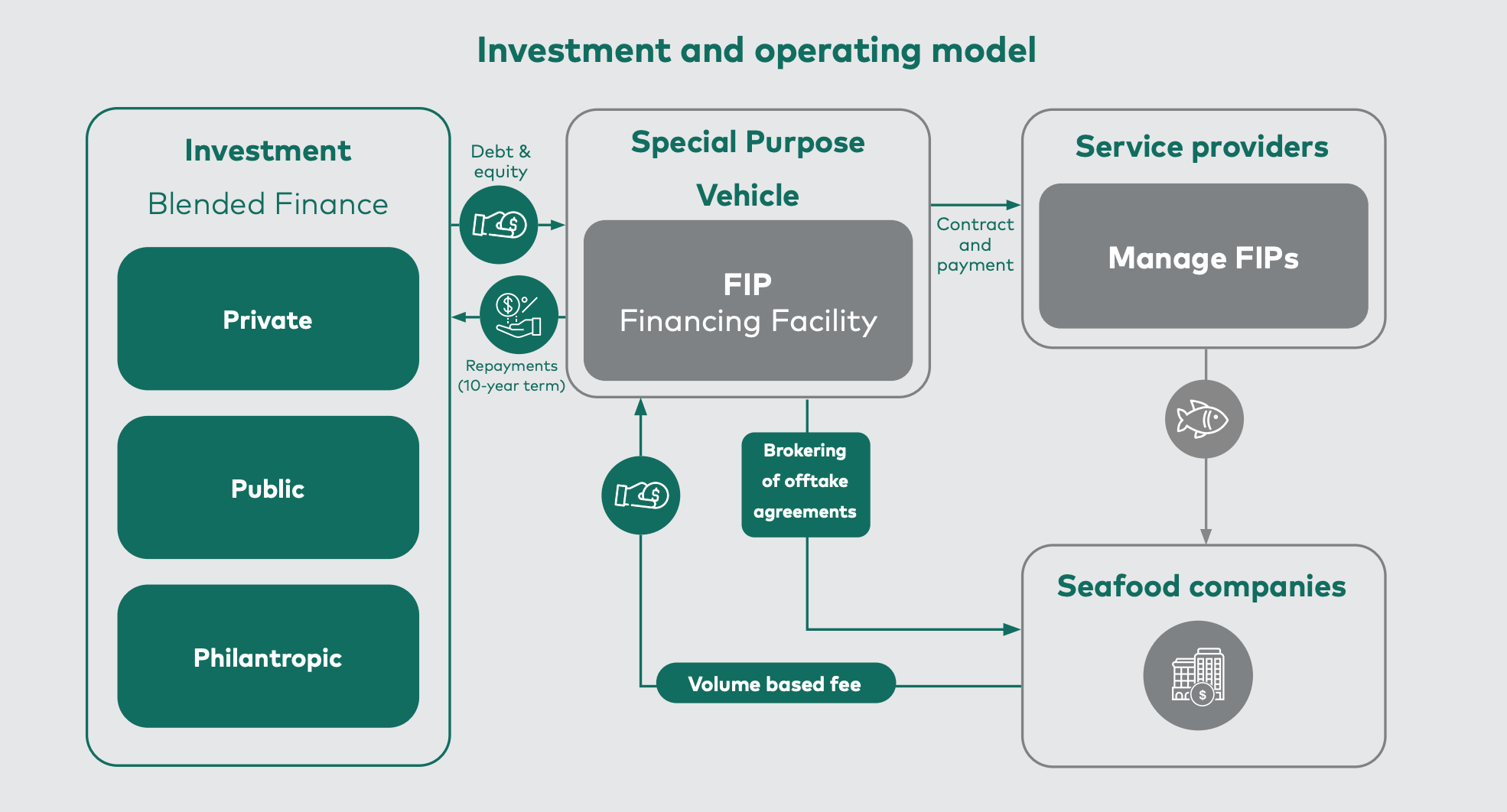Blended finance facility for Fisheries Improvement Projects
In a nutshell
Fishery Improvement Projects (FIPs) take a step-by-step approach toward the Marine Stewardship Council (MSC) standard, which is based on the core principles of sustainable fish stocks, the minimization of environmental impacts, and effective fishery management.
However, the lack of significant, long-term private sector finance for fisheries in transition is a key barrier to scaling up FIPs. To overcome this, WWF and Wilderness Markets are exploring the feasibility of a blended public and private finance facility, with an initial target of 3 to 5 FIPs within 2 years and a gradual expansion to reach fisheries all over the world.
Investment and operating model
The facility would secure commitments from companies buying from FIPs, ensuring a secure seafood supply for buyers in return for a volume-based fee. The facility would identify priority fisheries with corporate partners, contract service providers to implement FIP work plans, and use buyers’ fees to repay investors in the form of debt service and dividends over a 10-year period. Initial modeling has demonstrated the viability of double
digit returns.
The FIP Financing Facility would be a special purpose vehicle (SPV), managed by a Facility Manager, in which blended capital from public and private investors is placed. Concessionary debt with a tenor of 10 years is expected to provide around 70% of the funding, with equity providing the remaining 30%. Additional grant capital secured from philanthropic investors would supplement this.
Impact measurement
Key sustainability outcomes include:
- Ensuring the health and productivity of fish stocks
- Maintaining biodiversity and protecting vulnerable species, through a vulnerable species restoration plan and bycatch reduction plans
- Protecting vulnerable ecosystems and marine habitats
- Ensuring sustainable and equitable livelihoods for fishing communities
The facility’s progress reporting will be closely aligned with the FisheryProgress.org database methodology, which uses 28 indicators based on the MSC standard. External evaluators will be contracted to monitor and report on the achievement of impact metrics and outcomes.
Scalability and replication
The setup of the Financing Facility would be conducted in two phases:
- A pilot phase, during which the SPV will be established and a pipeline of FIPs will be developed
- A catalyzing phase, which will include the creation of a larger vehicle and the engagement of a broader base of potential investors and partners
This will allow the facility to develop a standardized process, ensuring consistent, timely, and cost-effective FIP development, and replication in multiple geographies.
Key criteria for scaling up this model include: commitment from seafood companies to secure a sustainable supply, credible implementation partners, robust processes for vetting projects, and enabling policy and legal frameworks.
